How to set up your board to make strategic decisions
We all know that boards are supposed to make the big strategic decisions and stay out of the way of management on operational decisions. So, how do we know which is which, and how do you maximise the quality of those big important strategic decisions with your board?
Some simple frameworks can help to simplify and systemise your choices
Deciding what is strategic
Most of the board’s decisions are not strategic. Often they are simple endorsement of day-to-day management recommendations or small items that don’t require deep thought or a decision-making process. A few decisions are strategic and will need a sound process with plenty of preparation. You need to know which is which.
The simplest way to manage this is to create a two-by-two framework where the axes are decision frequency/familiarity and decision scope/impact.
Measure frequency in units that suit of the length of your strategic plan, or the number of times per year that decisions of this type are expected to arise. For example, if your plan is five years long perhaps an expected strategic decision should only occur twenty times within the plan, or if your board meets monthly perhaps strategic decisions should only occur every second meeting.
This may sound like a low number of ‘serious strategic decisions’: A low number of strategic decisions will allow the board plenty of time to prepare without becoming overwhelmed by the quantity and diversity of decisions that directors face. It will also give management confidence to identify decisions that should go to the board and prevent them from clogging the board’s agenda with decisions that are routine operational matters.
Measure scope in terms of the likely impact of the decision, think about how many years the decision may commit the company to a particular course of action, or think about how many dollars the decision involves (perhaps as a percentage of total revenue or assets), or think about the number of people – clients or staff – that the decision will impact.
Consider revising your delegations of authority to include scope as well as dollar values.
Once you are happy with your axes and the measures, create a matrix like the one shown below;
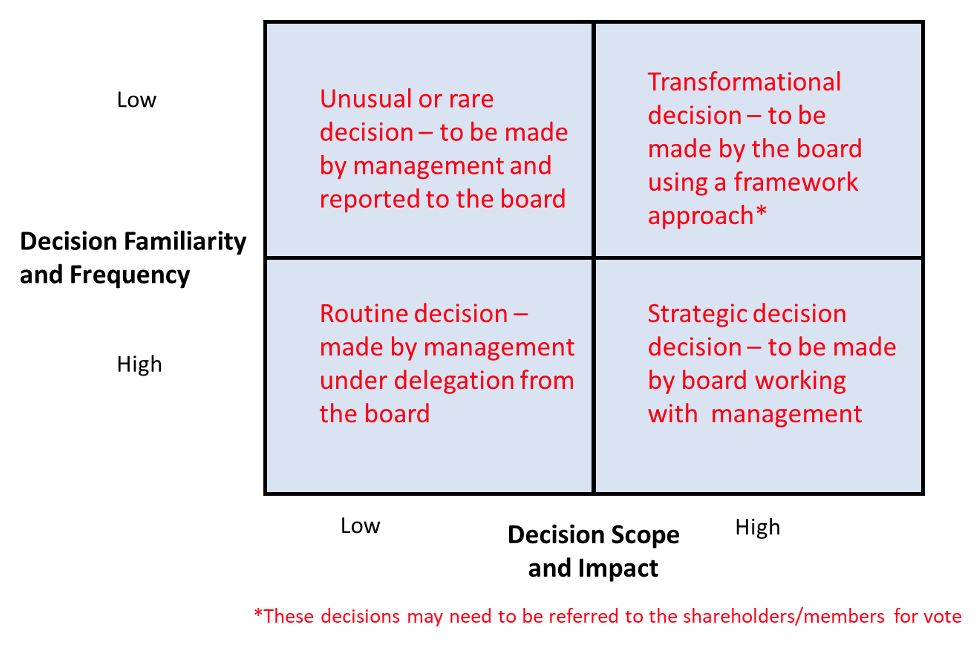
Using this matrix will make clear that the board does not wish to become involved in decisions that have little impact or scope. These are for management to make under their delegations.
Management should be encouraged to report any rare or unusual decisions within their delegated authority as these are sometimes a source of valuable insights into management’s thinking and into any new or emerging industry trends. Routine decisions with low impact should not be included in board reports.
A well calibrated matrix should not include more than ten strategic decisions per year. One decision may be made in several increments or may be discussed several times, to raise board awareness of the implications, before the decision is made.
Every so often, maybe once every five to ten years there will be a transformational decision. This might, for example, involve changing the nature of the company’s operations, divesting a major asset, or making a large acquisition. These decisions should never be rushed, they require several considerations by the board as the decision progresses, and usually will need a shareholder or member vote to allow the implementation.
Using a decision Framework
Once you have identified a decision as strategic or transformational, you will need a process or framework to help you take the decision responsibly.
A decision framework is a structured approach or set of guidelines that helps boards make informed and effective decisions. It provides a systematic way to generate and analyse options, evaluate alternatives, and consider various factors that may impact your outcome. A decision framework typically includes steps or components that guide your board through the process.

There are many different frameworks available. Most will cover some of these four or five steps:
- Problem identification or issue definition
- Data gathering
- Option generation
- Option evaluation and selection
- Implementation and monitoring of outcomes
It is important not to rush to step four too quickly. The job of the board is not to make the quickest plausible decision; it is to make the best decision in the long-term interests of the company. That may take time and should always involve consideration of several options. Resist the temptation to settle for the first possible answer.
Here are some common board-level decision frameworks:
Board Decision Process
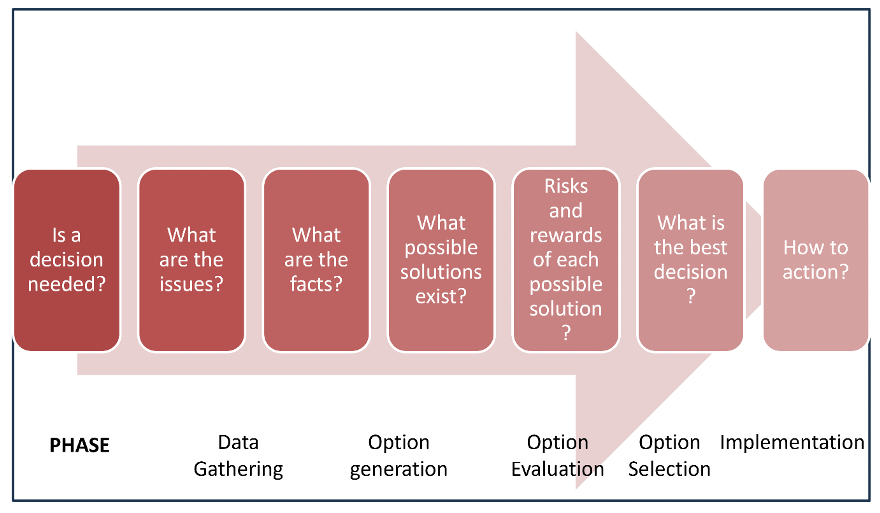
This ‘framework’ or process starts with a consideration of whether a board decision is indeed needed. It may be that no decision is required or that it is not a decision for the board. If there is any doubt, refer to the matrix above and to your delegations to ensure that the decision belongs at the board level.
The next phase is a data gathering phase that considers the issues and facts. Board discussions in this phase are generative, rather than decisive. They need plenty of time for deep thought and are well suited to workshops, rather than board meetings.
This is followed by a phase of developing a range of distinct options that address the issues and are consistent with the known facts. Many boards delegate this phase to management.
Once a range of potential solutions exists, the next phase is to evaluate and rank each potential option. Again, many boards delegate this stage to management. Ideally there will be a clear ‘best’ solution. If there is not, the board may continue analysing (if there is no rush) or simply choose one of the better decisions.
The final phase is to delegate action to management and to approve the necessary resources. Good boards will also set a review schedule so that they can remain informed of implementation and refine the decision if needed.
The Ethical Decision Framework
This framework was developed by The Ethics Centre. It has five steps: frame, shape, evaluate, refine, and implement. It is similar to, but more involved than, the decision process outlined above.
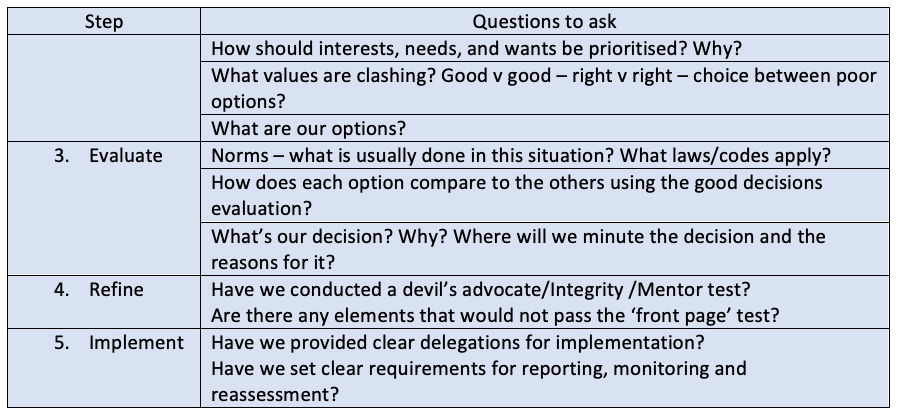
The ‘Good decisions evaluation’ mentioned in step 3 is illustrated below:
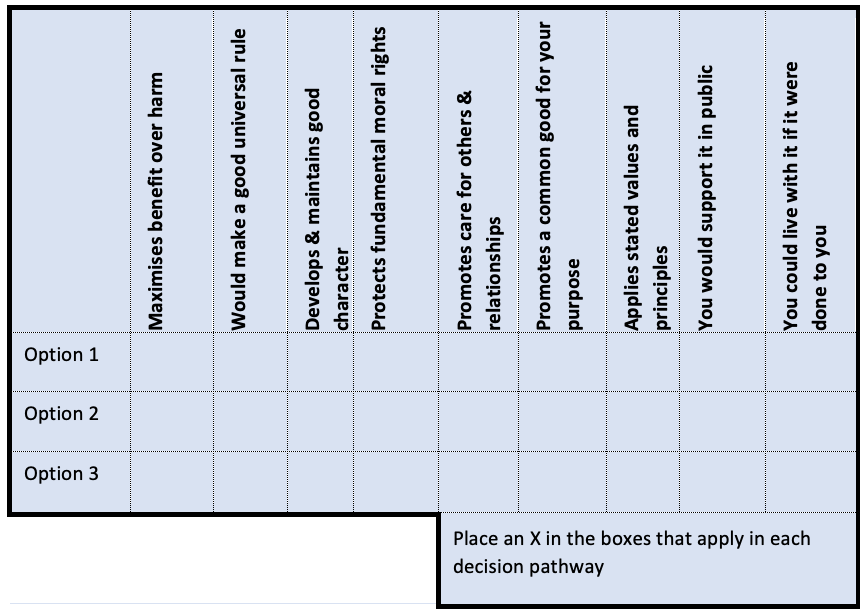
This framework is excellent for helping boards to discuss their instinctive and emotional reactions to the decision before they start to decide. Understanding the emotions, assumptions and values allows boards to separate these from facts, rules or legislation, and to make a decision that satisfies both sets of criteria.
The Board Initiative Decisioning Framework
This framework was developed by Mark A Pfister and helps a board to align decisions with the other fundamental governing guides for the organisation. It consists of six steps within a context of budget, time, and scope.

- The Board should ask, “Does the proposed initiative align with our organization's Values By first weighing the decision against the company's Values, you rapidly cull ideas that will not fit right at the beginning of the decision process.
- The Board should ask, “Does the proposed initiative align with our organization's Vision?” Compare the proposed decisions, initiatives, and actions to the organisation's desired future state - the Vision. If they are not in support of the organization's future-state, they will only act as a distraction, or worse yet, a derailer to where you want to go.
- The Board should ask, “Does the proposed initiative align with our organization's Mission?” An organization's Mission outlines what a company currently does, or wants to do. Decisions that reinforce the mission have an accelerating effect, making everything faster or less effortful. Decisions that go against the current mission and activities – even if they support the vision and purpose – will may everything harder. Are they worth the effort? Only your board can know and decide.
- The Board should ask, “Does the proposed initiative align with our organization's overall Goals?” An effective decision-making process must operate under the assumption that the Board and CEO (or Executive Director) have an integrated approach to goal setting and a method to measure the progress of achieving them. Decisions that do not advance the company towards its current goals are more difficult to implement and build support for.
- Each Board Committee, and the Board, should ask, “Does the proposed initiative align with a specific Board Committee’s sub-Goals as well as the overall Board’s goals?” Board Committees have a unique role in the effectiveness of the overall Board. After all, this is where the 'work' gets done within a Board of Directors. It should be obvious which Board Committee will handle what work, assuming the Board architecture is correct. Aligning Board Committee work with the overall organisation's goals, and the Committee's sub-goals, in support of the overall goals, is key.
- The Board should ask themselves, “Does the organization have the expertise and resources to effectively and efficiently meet this goal?” The Board must have an in-depth understanding of the organization's delivery capability and be able to spot risks before they become issues.
Throughout the 6-step decisioning process, the overlay considerations for budget, scope, and time need to be continuously considered for valid outcomes.
The CAPPED Framework
This is another useful framework. The steps are:
- Clarify – What exactly do we need to decide?
- Analyse – what do we need to know to make a responsible decision?
- Project – what are our options to make the decision?
- Prioritise – what do we need to discard to assist the decision? What elements carry most weight in our decision?
- Experiment – what do we need to test or validate before we can responsibly decide?
- Decide – what do we need to do to give effect to our decision? How will we delegate effectively?
The Ladder of Inference
This framework was developed by Chris Argyris. It consists of a series of steps (or rungs) that can be taken before making or implementing a decision.
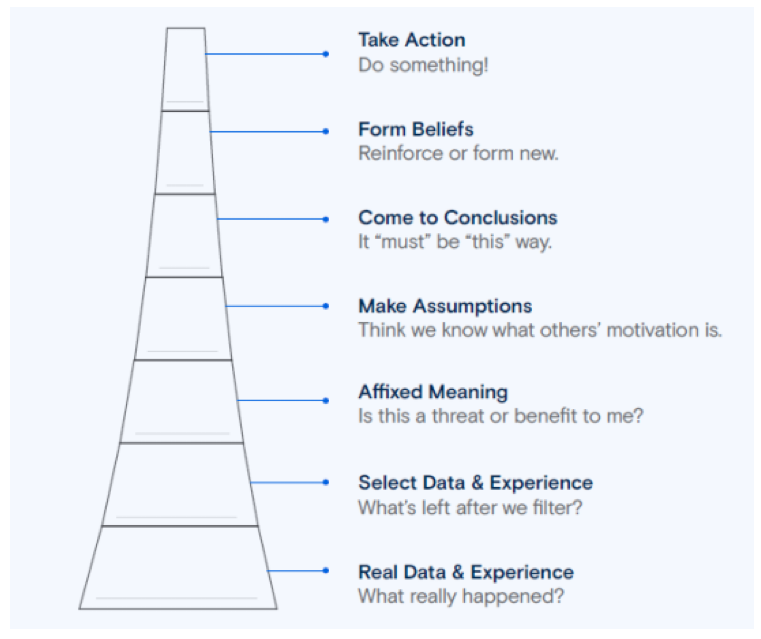
The first step is to consider all of the available data, including the pieces of information that don’t fit our personal mental models. The second step is to be explicit about what is filtered and why, so that we understand the data that remains for use in our decision.
Steps three and four are to affix meaning to the data and to start to make assumptions about things we lack data on. In the model step four is explicit about other people’s motivation. In practice it can also include whether or not there will be a drought or interest rate rise, explicit assumptions can remain ‘front of mind’ so that they are monitored, and your decision reviewed if they change.
Step five might look like the ultimate step, form conclusions. However, these need to be tested. You have probably heard wise chairs say things like “it appears we are agreed that …”. These are tests of the conclusion that the board is reaching, directors will either agree or keep talking until they have resolved any small difference of opinion about the matter.
At step six, the board has either affirmed its existing belief or formed an agreed new belief. Agreement is important, partially agreed beliefs are a poor foundation for strategic decisions.
At step seven the decision is made and implementation can begin.
If your board struggles to reach agreement on any of the steps the deadlock can usually be resolved by retreating two steps down the ladder and gaining agreement before proceeding back up towards the decision.
Which framework is best?
Different frameworks will serve different boards better at different times and for different types of decision. This table highlights some of the strengths and weaknesses of each of the frameworks in this document.
| Framework | Strengths | Weaknesses |
| Board decision process | Explicit consideration of whether a decision is needed at this time by the board and of how to implement | May be too ‘logical’ and discount emotions or feelings |
| Ethical decision framework | Explicit consideration of emotions and feelings which allows them to be appropriately treated | Can be time consuming if done thoroughly Consideration of norms can stifle innovation |
| Board initiative decisioning framework | Aligns work of the board and its committees with the strategy | Can become too inwardly focused |
| CAPPED framework | Invites board to consider discarding unhelpful beliefs or norms Invites experimentation |
Jumps quickly from experiment to implement without considering the process for taking the decision Starts from the position that a decision is required |
| Ladder of inference | Builds strong shared agreement or consensus | Can lose focus with too wide a pool of information at the start or with forming belief prior to deciding |
Whichever framework you choose to use, there will be pros and cons. You may find that using more than one framework is helpful.
Don’t try to do this on every decision, save it for the large strategic decisions that can be taken in stages across a number of board meetings or in a concentrated workshop.
Good luck!
Share this
You May Also Like
These Related Stories
.png)
How to align your governance strategy and your organisation

The Role of the Board in Strategic Management


